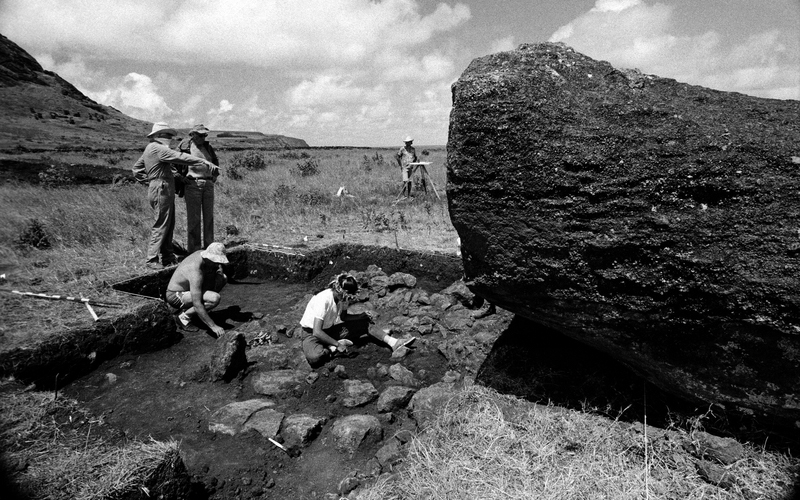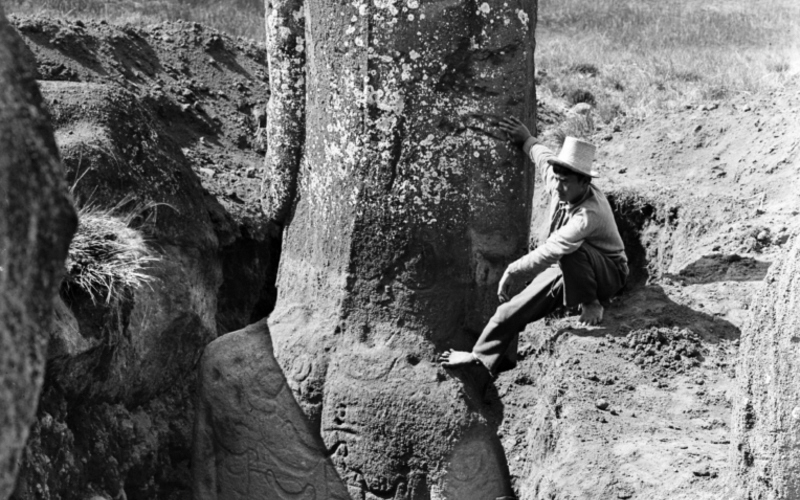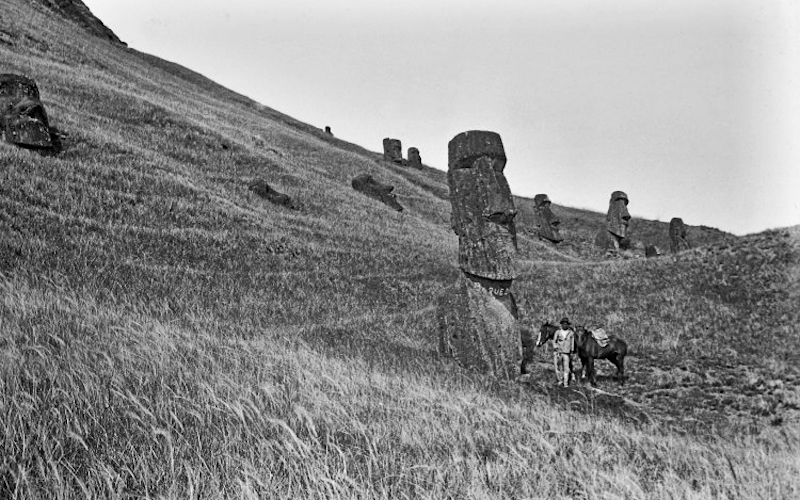Securing a round-trip ticket is essential, and your stay as a tourist cannot exceed 30 days.
Easter Island: Where History Meets Legend
Easter Island, also known as Rapa Nui, is a tiny island in the southeastern Pacific Ocean, renowned for its massive Moai statues that are strewn across the landscape. The world is captivated by these impressive statues not only for their sheer size and quantity but also for the remarkable circumstances under which they were created. On this small speck of land, tribal leaders erected monumental megaliths to honor their ancestors. Despite limited resources the Rapa Nui people managed to transport these colossal statues several kilometers across rugged terrain to their final locations. Eventually, the civilization faced a decline, nearly vanishing entirely. The few remaining descendants endeavored to preserve their heritage through oral traditions, passing down stories of a once-great past. Today, scattered throughout the island, the enigmatic statues stand as silent witnesses to the island's former glory. With a history that blurs the lines between reality and legend, Easter Island is a place where the echoes of the past resonate in almost surreal ways. Despite a population that once dwindled to just over a hundred individuals, there are now around 3000 people who proudly carry on the legacy of the Rapa Nui lineage. Today, Easter Island is a part of Chilean territory, and the cultural influences from Chile are deeply ingrained in the island's society. The descendants of the Rapa Nui people remain steadfast in their efforts to preserve their cultural heritage by engaging in traditional practices such as dance, art, and music. In a society largely driven by tourism, the spirit of Rapa Nui lives on, blending the richness of the past with the vibrancy of the present.
Plan Your Visit to Rapa Nui - Easter Island Entry Guidelines
Discover the enigmatic beauty of Easter Island with our comprehensive entry guidelines to ensure a smooth and memorable experience.
In compliance with the latest regulations, visitors are required to adhere to the following entry requirements:
-
Round-Trip Ticket
- Entry Form (FUI)
-
Identification
Have a valid identity card and/or passport.
-
Accommodation
During your visit to Rapa Nui, it is mandatory to stay in accommodations accredited by Sernatur, the Chilean National Tourism Service, ensuring quality and compliance with local standards. We recommend confirming with your chosen hotel, hostel, or cabin if they are registered with Sernatur.
To streamline your travel experience, please bring a printed or online copy of your booking confirmation to present upon boarding. If uncertain about your accommodation's registration status, feel free to contact them directly for verification. Rest assured, most accommodations on the island are registered with Sernatur, offering a comfortable and compliant stay for all visitors. -
National Park Guidelines
Visitors must be accompanied by a guide when entering national park sites, with exceptions for Tahai and Anakena. 6. **Rapa Nui National Park Ticket**: Purchase a ticket to access the Rapa Nui National Park, covering over 40% of the island and key archaeological sites. Remember, the ticket is valid for 10 days, individual, non-transferable, and must be carried at all times.
-
Rapa Nui National Park Ticket
Purchase a ticket to access the Rapa Nui National Park, covering over 40% of the island and key archaeological sites. Remember, the ticket is valid for 10 days, individual, non-transferable, and must be carried at all times.
Buy your ticket
The National Park
The Rapa Nui National Park is a testament to the rich legacy of the Rapa Nui culture and showcases unique architectural structures and sculptures within the Polynesian realm. Spanning approximately seven thousand hectares, the park encompasses the main island and four neighboring islets, with its archaeological sites serving as focal points. With around 900 magnificent moai statues, over 300 ceremonial platforms, and numerous structures representing different aspects of ancient life, the park offers a glimpse into the skilled craftsmanship and cultural heritage of the Rapa Nui people. Carved from yellow-brown lava tuff and ranging from 2 to 20 meters in height, the moai are awe-inspiring. The ahu, or ceremonial platforms, and quarries like Rano Raraku provide valuable insights into the island's history and culture. Despite facing ecological challenges and societal decline in the 16th century, the park stands as a testament to the enduring spirit of the Rapa Nui civilization. The sacred village of Orongo, with its fascinating semi-subterranean stone houses and petroglyphs, provides further insight into the island's cultural evolution. Ongoing conservation efforts aim to preserve the park's archaeological sites and combat issues like invasive species and illegal cattle grazing. With minimal intervention since its abandonment in the 19th century, the park maintains a high level of authenticity, ensuring the preservation of its historical and cultural significance.
Historic timeline
1935
First stepsRapa Nui
The entire island was declared a National Monument by the National Forest Service of Chile (CONAF)
1976
Further additionsThe three Motu
The islets adjacent to Easter Island are declared a National Monument by the National Forest Service of Chile (CONAF)
1996
UnescoWorld Heritage Site
On 22 March 1996 UNESCO designated it a World Heritage Site of cultural significance under criteria (i), (iii), & (v)
2017
AutonomyIndigenous Community Ma'u Henua
Rapa Nui National Park is now under the administrative control of the Ma´u Henua Polynesian Indigenous Community, which is the first autonomous institute on the island


